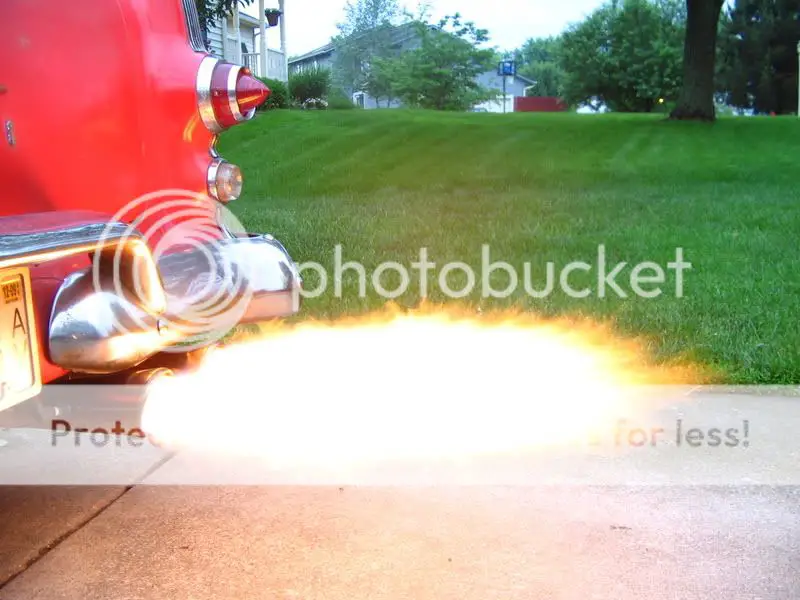Mightyboosh
New Member
On a 4 stroke.
I was riding my 250 Yamaha Enduro to the junk yard a long time ago to fetch a drum brake and had a towel on the seat to keep the grease ect. off my bike...ANYHOW the towel caught fire and so did the seat does that count for anything as the flames were NEAR the exhaust? It was a funny sight to behold!


I built a few flamethrowers many years ago. They are simple in the cars, and I believe no more complicated for a bike that has a remote coil/cdi. Straight mags wouldn't work.
The key will be the switch.
Needed will be a momentary switch that has two contact sets. Normally open, and normally closed. When the switch is left alone, the power/ground/whatever that signals the coil that runs the engine is going through the normally closed contacts. When you push the button, you drop the engine ignition and fire the flamethrower ignition. It will use the same trigger system as the engine.
Open the throttle and as the engine approaches it's higher rpm you push the button, killing the primary ignition and firing the secondary "flamethrower". You hold the throttle WFO and cycle the switch, which allows for the unburnt fuel to run the flamethrower.
This will only work if the primary ignition has a trigger source that can be split. In a car, it's the ground wire between the distributor and coil. Nothing changes except for where the signal goes. I don't know how much primary voltage you have with a CDI, but if it is not too much to short within the switch, you should be able to do it quite easily.
BTW. I've never heard of any type of engine problems associated with flamethrowers, but a few mufflers have suffered.
yes, that's exactly how a flame thrower kit works that you can buy for a car.
yes, there have been engine troubles related to this type of flame thrower.
when you use it, you're washing the cylinder(s) down with raw gas which washes oil away.
it can wear out a set of rings in no time.
This happened to a friend of mine who had flame throwers on a 53 chevy.
a brand new crate engine lasted one year after him using the flame thrower as often as he could.
the failure was the rings, and after about 6 months of using the flame thrower, it started to burn oil really bad and it lost compression.
he pretty much killed a brand new engine in less than 12 months from using a flame thrower of this style.
I had one on my 55 for awhile, but i took it off after he found out that his engine was toast.
I believe that your friend had more of an issue than just using the flamethrower.
When using a flamethrower the first 2 cycles, intake and compression strokes, are exactly the same as if ithe engine was running. The charge temps rise dramatically when the charge is compressed, and the mixture becomes a gas rather than the great solvent it normally is. It doesnt wash the cylinder down in that state. Even if the changing from liquid didn't occur, the washing of the cylinder walls could only be doubled from "normal" operation.
A 4stroke engine has oil rings who's job is to scrap the oil off the cylinder walls to keep it from being burned.
A 2 stroke however, has no oil rings and the intake charge contains the same amount of oil as was in fuel/oil mix, making what happened to your friend a mute point in their case.
cranking over a engine thats not firing is not going to wash the cylinder walls of oil, unless it was hellishly flooded with fuel from a stuck float or some other problem which cause raw fuel to pour into the cylinder. and in that case your going to have to crank it over any ways to clear out the cylinder. chances are your friend there failed to properly break in his new crate motor and it accelerated ring wear.


